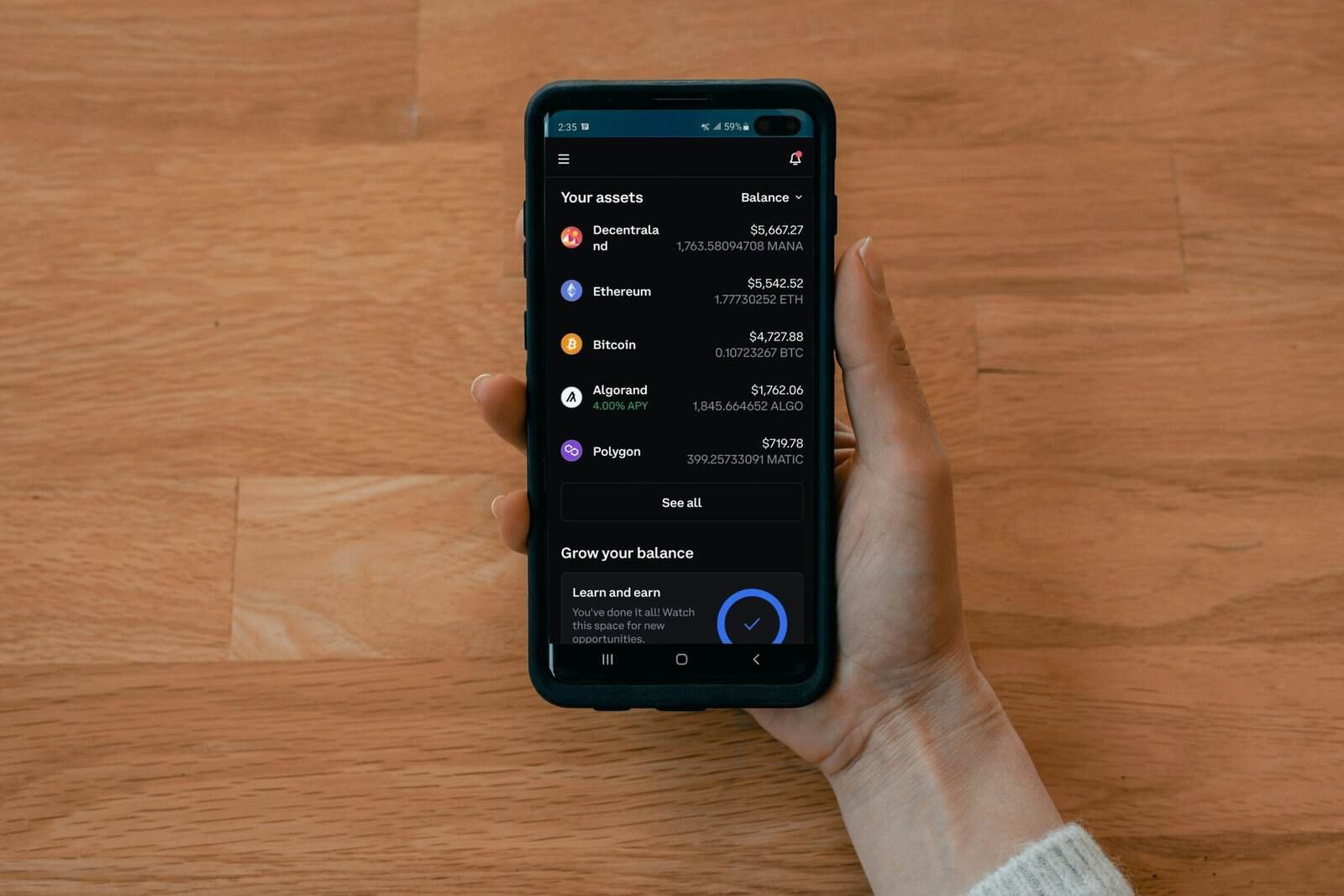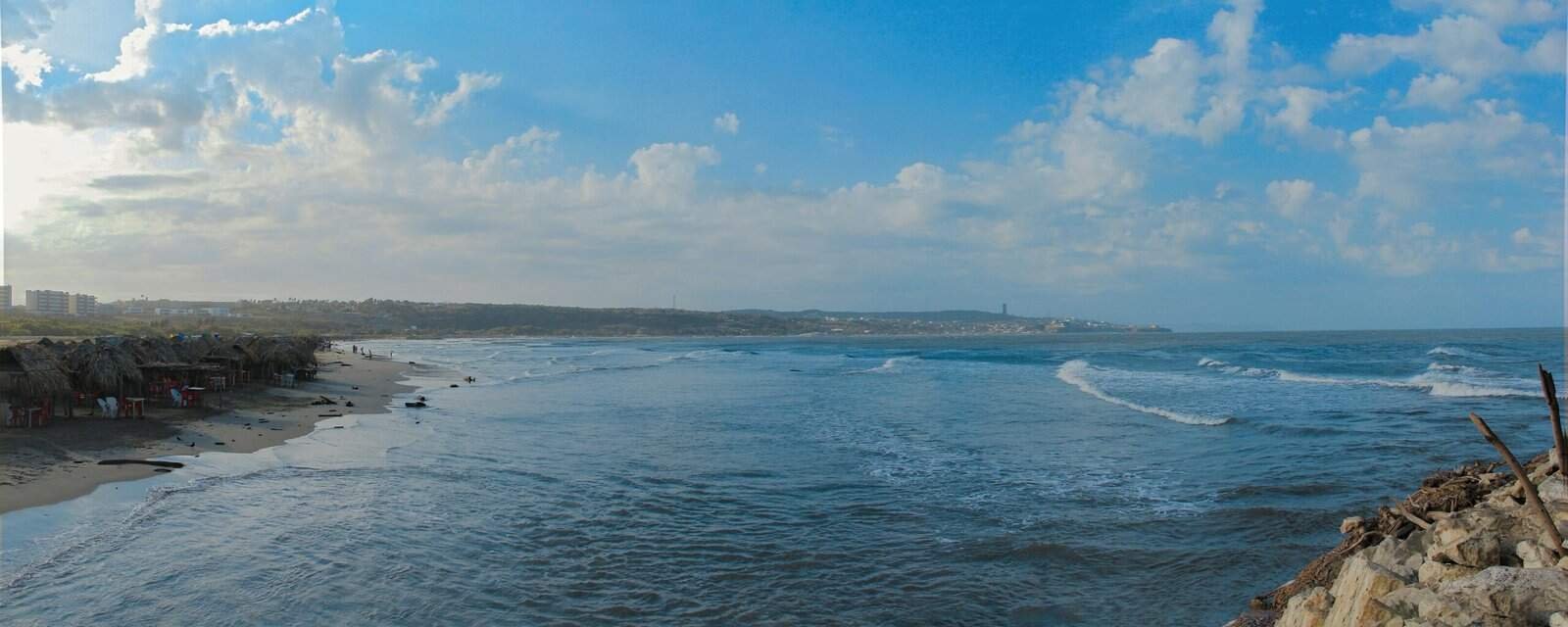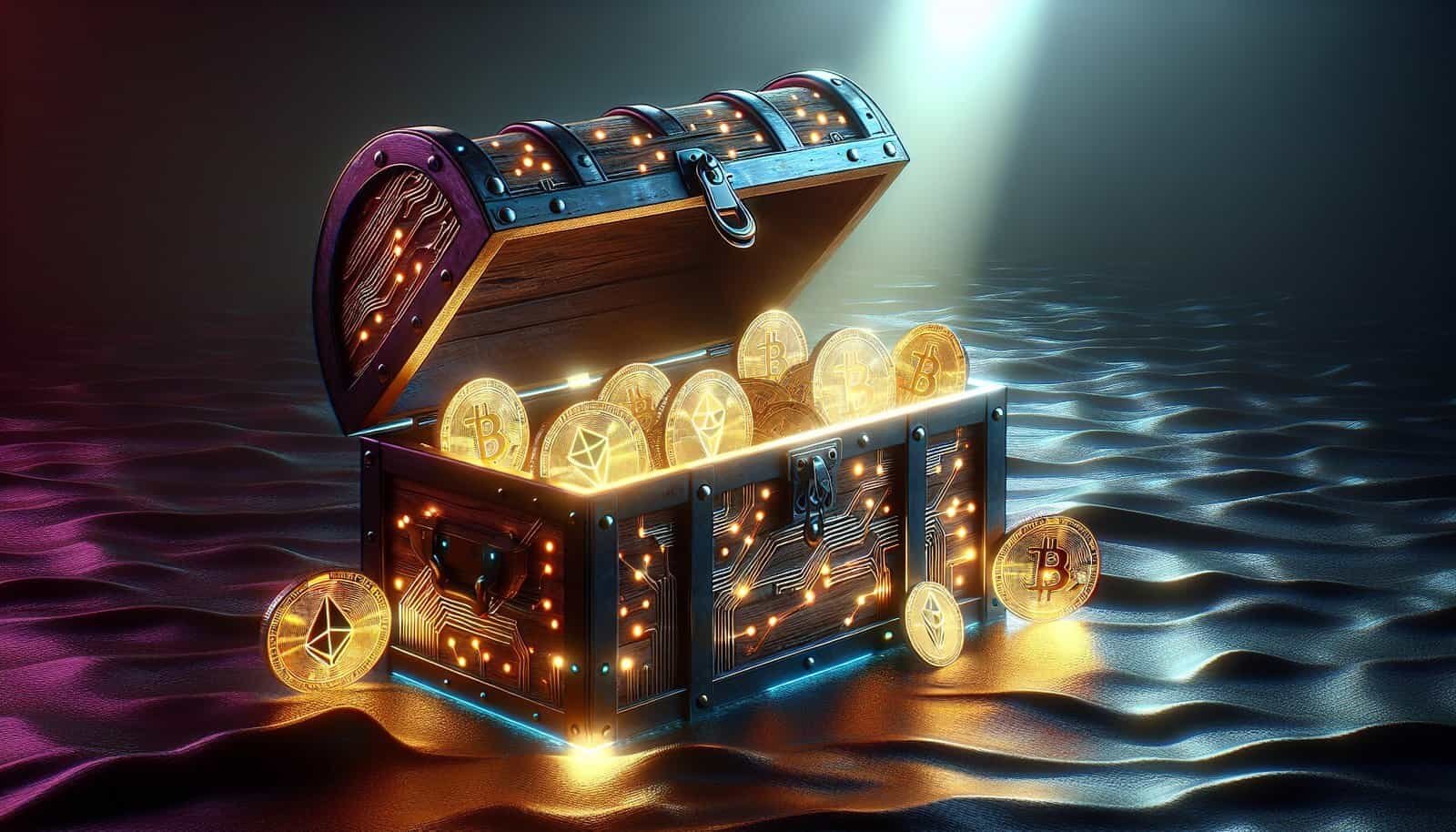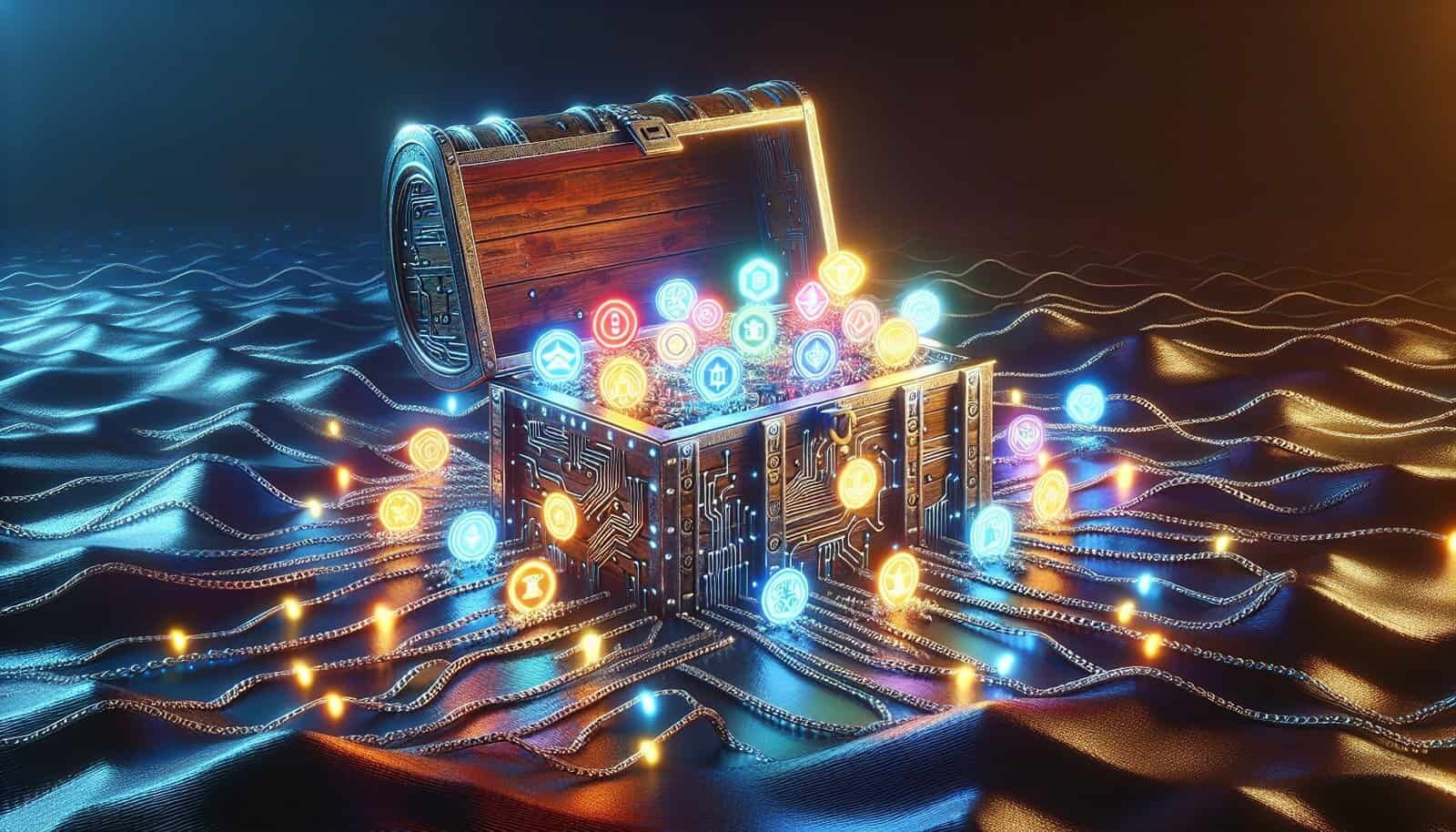Have you wondered how OpenSea became the largest NFT marketplace and what supporting 19+ blockchains means for your ability to trade digital collectibles?
OpenSea – The Largest NFT Marketplace, Now Supporting 19+ Blockchains For Broad Cross-chain Trading.
This article explains what OpenSea’s multi-chain move means for you and how it changes the way you buy, sell, and trade NFTs. You’ll get practical steps, security tips, comparisons with VeVe, and guidance on managing cross-chain complexity.
What is OpenSea?
OpenSea is a leading peer-to-peer marketplace where you can buy, sell, and discover NFTs across many categories like art, collectibles, gaming items, and virtual land. It was one of the first major marketplaces to aggregate NFTs and make searching, listing, and transacting easy for collectors and creators.

Why OpenSea matters to your NFT experience
OpenSea grew its user base and liquidity by making NFT trading accessible and visible to a global audience. Because you can find large collections and discover niche projects in one place, OpenSea often acts as a primary market entry point for many collectors and creators.
What does “supporting 19+ blockchains” mean for you?
Supporting 19+ blockchains means OpenSea now lists NFTs that originate from many different networks, enabling you to view and transact tokens across those networks within a single marketplace interface. That broad support reduces fragmentation and gives you more choices, whether you care about gas costs, chain speed, or specific projects that live on certain blockchains.
How chain support changes your choices
You’ll be able to compare similar collections that exist on different chains, purchase cheaper gas alternatives, and engage with communities that prefer non-Ethereum environments. The downside is that you’ll need to manage different networks and possibly bridge assets or funds to complete some trades.

Example list of blockchains OpenSea supports (19+)
Below is a representative list of blockchains included under the “19+” umbrella. This gives you an idea of the networks you may encounter when transacting on OpenSea. Note that the full set can expand over time.
| Blockchain | Typical strengths |
|---|---|
| Ethereum | Largest NFT ecosystem, strong provenance and liquidity |
| Polygon | Low fees, fast transactions, compatible with Ethereum tooling |
| Solana | High throughput, low fees, growing NFT ecosystem |
| Klaytn | Popular for specific Asia-based projects and partners |
| Immutable X | Zero gas fees for NFT minting/trading, Ethereum L2 |
| Ronin | Game-focused chain (Axie Infinity heritage) |
| Arbitrum | Ethereum L2 with lower fees |
| Optimism | Optimistic rollup with Ethereum compatibility |
| Avalanche | High speed and customizable subnets |
| BNB Chain | Low fees, strong BSC DeFi ecosystem |
| Flow | Designed for collectibles and consumer apps |
| Tezos | Eco-friendly proof-of-stake, collector-focused |
| Near | Developer-friendly, low fees |
| Fantom | Fast, low-cost transactions |
| Sui | Newer chain focused on high performance |
| Aptos | Emerging performant chain for web3 apps |
| Base | Coinbase’s L2 focused on accessibility |
| Mantle | L2 aiming at low-cost, high-throughput transactions |
| zkSync | ZK-rollup focused on low-cost security |
How cross-chain trading works on OpenSea
Cross-chain trading on OpenSea primarily means you can list and trade NFTs that originate from different chains. In many cases, you’ll need to use the network-specific wallet and currency for the trade. When buying, you often must hold a token native to the chain (like SOL for Solana or MATIC for Polygon) or a wrapped form compatible with the platform.
Bridging, wrapping, and custody
If you want to move funds or NFTs between chains, you’ll commonly use a cross-chain bridge that locks assets on one chain and mints wrapped equivalents on the other. For NFTs, wrapping can create a tokenized representation, but wrapped NFTs can sometimes lose direct traceability to the original asset unless the marketplace or bridge preserves provenance.

Wallets and network setup: what you need to know
To transact across many chains, you’ll use wallets that support multiple networks or specialized wallets dedicated to single chains. Make sure your wallet lets you switch networks and sign transactions safely. Popular choices include MetaMask (multi-chain for EVM-compatible networks), Phantom (Solana), and Coinbase Wallet.
Recommended wallet setup steps
- Install a wallet that supports the chains you plan to use.
- Back up your seed phrase and store it offline in a secure location.
- Add networks to your wallet when required, or use wallets that auto-detect networks.
- Consider using a hardware wallet for larger holdings.
Fees, gas, and royalties — how they affect your trades
Each chain has its own fee model and gas behavior. While Ethereum mainnet can be expensive during peak times, many L2s and alternative chains offer near-zero fees. In addition to network fees, OpenSea charges a platform fee (historically 2.5% on sales) and creators can set royalties that are applied on secondary sales.
Comparing fee dynamics across chains
- Ethereum: Higher gas, high liquidity, strong royalties enforcement.
- Polygon/Immutable X: Low to no gas, cheaper minting and trading, faster confirmations.
- Solana: Very low fees, quick transactions, different wallet and tooling.
- L2s (Arbitrum/Optimism): Lower fees than Ethereum with similar security assumptions.
| Cost factor | Ethereum | Polygon / Immutable X | Solana | Arbitrum / Optimism |
|---|---|---|---|---|
| Typical transaction fee | High | Very low/zero for some actions | Very low | Low |
| Minting cost | High | Low | Low | Low |
| Confirmations | Slower | Fast | Fast | Fast |
| Royalties enforcement | High | Varies | Varies | Varies |

How to list an NFT for sale across chains on OpenSea
Listing an NFT requires that your wallet is connected to the correct chain and that you own the NFT on that chain. After connecting, you’ll set the price, choose sale type (fixed price or auction), and confirm the listing. If the NFT exists on another chain, you’ll not be able to list it on that chain unless it’s bridged or wrapped.
Step-by-step listing guide
- Connect your wallet and switch to the NFT’s native network.
- Go to the NFT’s page on OpenSea and click “Sell.”
- Choose your sale type, price, and duration.
- Confirm the transaction in your wallet. If required, pay an approval or gas fee.
- Your listing appears and other users can buy according to your terms.
How to buy NFTs across different chains on OpenSea
When buying, ensure you’re on the correct chain and hold the required token to pay for the item and the gas. If you’re using a different chain wallet than the NFT’s chain, you must bridge funds or swap tokens first. Double-check contract addresses and collection details to avoid impostor listings.
Buying checklist
- Confirm the NFT’s chain and collection authenticity.
- Make sure your wallet is set to that chain and funded with the right token.
- Review fees and royalties to understand your total cost.
- Use trusted bridges and swap services if you need to move funds across chains.

Cross-chain bridging: what to watch out for
Bridges are powerful but come with risks: smart contract vulnerabilities, liquidity issues, and long transaction times in some cases. Use reputable bridges, confirm that wrapped NFTs retain provenance, and never approve more token allowances than necessary.
Safe bridging practices
- Use official or widely recognized bridges with strong audits.
- Bridge modest amounts the first time to test the process.
- Keep transaction receipts and contract addresses for provenance and support.
Security best practices for cross-chain NFT trading
Your security posture should include hardware wallets for significant holdings, minimal token approvals, verified contract checks, and awareness of phishing attempts. Don’t click unknown links and always verify collection pages, social channels, and contract addresses.
Common scam indicators
- Collections with a small number of holders and sudden hype.
- Contracts that request unlimited approvals without reason.
- Direct messages or links claiming “exclusive drops” or urgent sweeps.
- Offers below-market that try to get you to sign transactions.
VeVe – A licensed digital collectibles marketplace supporting multiple blockchains.
VeVe is a marketplace and mobile-first app focused on licensed digital collectibles from major brands like Marvel, DC, and other entertainment IP holders. Its emphasis is on officially licensed drops, curated experiences, and collectibles that often come with 3D models and augmented reality features.
How VeVe differs from OpenSea in your experience
You’ll find VeVe is more controlled: drops are curated and licensing is explicit, so you can be confident about authenticity with large IP partners. OpenSea is broader and more open to independent creators, giving you a wider selection but requiring more due diligence from you.
VeVe features that matter to collectors
VeVe offers collectibles with a focus on presentation, app-driven experiences, and a marketplace tailored to licensed drops. If you care about official partnerships and collectible presentation (including AR and virtual showrooms), VeVe offers a different value proposition than a general marketplace like OpenSea.
Typical VeVe process for a collector
- Install the VeVe app and create an account.
- Participate in drops or buy on the secondary market within the app.
- Use in-app features like AR viewing or showcase your collection in a virtual environment.
Comparing OpenSea and VeVe — quick reference table
This table helps you compare how OpenSea and VeVe serve your collecting and trading needs.
| Feature | OpenSea | VeVe |
|---|---|---|
| Primary focus | Broad NFT marketplace (art, gaming, collectibles) | Licensed digital collectibles and experiences |
| Blockchain approach | Multi-chain (19+ networks) | Multi-chain or platform-specific depending on drops |
| User control | High (you manage wallets, chains) | App-centric, somewhat more curated control |
| Royalties/Fees | Platform fee + creator royalties | App fees + royalties per contract |
| Audience | Creators, collectors, traders | Collectors seeking licensed IP, fans of brands |
Practical tips for cross-chain NFT trading success
- Keep a clear record of where each asset lives (which chain and wallet).
- Use portfolio tools or spreadsheets to track value denominated in a stable currency.
- Maintain a small gas buffer on each chain to cover unexpected fees.
- Test bridges and transactions with small amounts before large moves.
- Educate yourself on the differences between wrapped and native NFTs.
How to manage multiple chains in practice
You’ll likely have several wallets or networks configured within one wallet app. Label accounts clearly, separate high-value assets into hardware wallets, and consider using a dedicated browser profile for web3 activities to reduce cross-site contamination.
Legal and tax considerations you should be aware of
NFT sales and trades often constitute taxable events; rules vary by jurisdiction. You’ll need to track purchase prices, sale proceeds, and any bridging or swapping costs that affect tax basis. Licensing matters too: some NFTs carry limited rights, while others grant broader usage rights.
Steps to keep compliant records
- Record blockchain transaction hashes, timestamps, and fiat value at transaction time.
- Keep invoices and sale confirmations for royalty or contract disputes.
- Consult a tax professional experienced in digital assets in your jurisdiction.
Risks, pitfalls, and what you can do to mitigate them
Risks include smart contract bugs, marketplace hacks, rug pulls, and cross-chain bridge failures. Reduce exposure by using audited contracts, starting small, and diversifying holdings. Also, be wary of projects promising guaranteed returns or celebrity endorsements without verification.
Insurance and third-party protections
Some third-party services offer on-chain insurance or custodial protections, but these can be costly and may introduce counterparty risk. Evaluate whether insurance makes sense for your portfolio size and risk tolerance.
How creators can take advantage of multi-chain support
If you create NFTs, multi-chain support lets you choose the chain based on cost, audience, or technical features. You can mint on low-fee chains to reach emerging communities or choose Ethereum for visibility and perceived provenance.
Creator tips for cross-chain launches
- Communicate clearly which chain your token lives on and how buyers can store it.
- Consider multi-chain drops only if you can support community and bridge questions.
- Set royalties and contract metadata consistently to preserve long-term value.
Future outlook: where cross-chain NFT markets are heading
Interoperability standards and better bridging will continue to mature, making cross-chain trading smoother for you. Expect more marketplaces to support multi-chain views and possibly native cross-chain swaps that minimize bridging friction.
What to watch for next
- More robust cross-chain provenance standards so wrapped NFTs retain clear origin.
- Native cross-chain order books or atomic swaps for NFTs.
- Improved wallet UX that abstracts network switching in safe ways.
Frequently asked questions (FAQ)
Q: Can I move an NFT bought on OpenSea from one chain to another?
A: Generally, you’ll need a bridge or wrapping service. Native NFTs can’t be “teleported” across chains without a bridging mechanism; always check how provenance and ownership metadata are preserved.
Q: Are royalties enforced across all chains?
A: Enforcement varies by marketplace and chain. OpenSea tries to respect royalties on chains and marketplaces that support them, but enforcement depends on the ecosystem’s technical support for royalties.
Q: Do I need multiple wallets for different chains?
A: Not always. Some wallets support multiple chains within one interface. However, certain chains (like Solana) often work best with their native wallets (e.g., Phantom), while EVM-compatible chains can often be handled by MetaMask.
Q: How do I confirm a collection is genuine on OpenSea?
A: Look for verification badges, check the contract address against the project’s official channels, confirm holder and transaction history, and use third-party trackers to validate provenance.
Checklist before you buy or list an NFT on OpenSea
- Confirm the token’s chain and collection authenticity.
- Ensure your wallet is connected to the correct network and funded.
- Review fees, royalties, and potential bridging steps.
- Use small test transactions for unfamiliar workflows.
- Keep a record of transaction hashes and communications.
Final thoughts
With OpenSea’s support for 19+ blockchains, you gain access to a vast range of NFT ecosystems in one place, but with that convenience comes the need for stronger personal security practices and multi-network knowledge. VeVe serves as a complementary, more curated option for licensed collectibles, while OpenSea gives you breadth and liquidity for a wide range of projects. By planning your wallet setup, learning bridging basics, and applying careful verification, you’ll be better equipped to participate in the expanding cross-chain NFT landscape.
If you want, I can walk you through a sample purchase or listing on a specific chain step-by-step, tailor a wallet setup guide for your preferred networks, or compare fees for two chains you’re considering. Which action would you like to take next?
